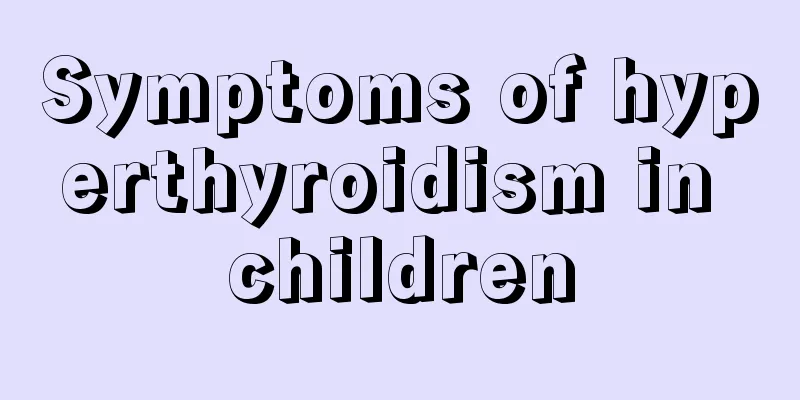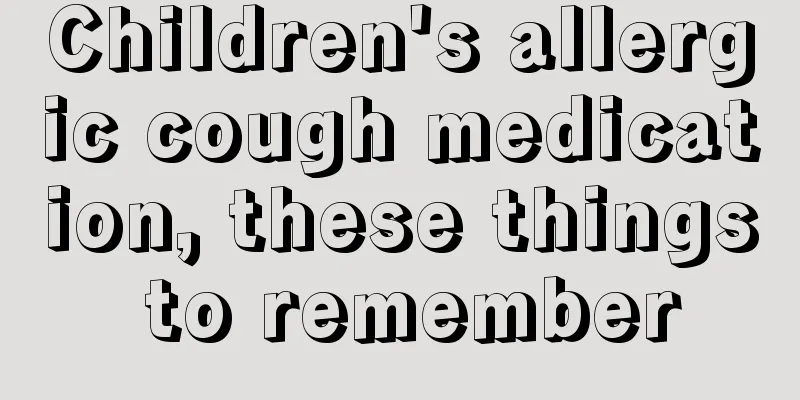Baby has diarrhea after taking jaundice medicine

|
Nowadays, many newborns have severe jaundice, so parents usually give their babies some medicine for fear that it will affect their children's health. However, treating jaundice does not necessarily require medication, because the medicine may also have some side effects. For example, the baby may have diarrhea after taking jaundice medicine. Jaundice must master the regular treatment methods to avoid worsening of the disease. treat 1. Supplement sufficient calories, vitamins, essential amino acids and fatty acids. 2. Use medication reasonably according to the cause of the disease. 3. Surgery: Surgery is used when bile duct obstruction is caused by tumors or stones. 4. Treatment of neonatal jaundice: Phototherapy should be used for neonatal jaundice. Phototherapy can change the chemical structure of bilirubin, making it easily soluble in water and excreted by the kidneys. Clinical manifestations (I) Symptoms and signs 1. Fever: Jaundice with fever is often seen in acute cholangitis, and is also accompanied by chills. Liver abscess, sepsis, and leptospirosis all cause moderate or even high fever; acute viral hepatitis or acute hemolysis often causes fever first, followed by jaundice. 2. Abdominal pain: Jaundice accompanied by severe colic or pain in the upper abdomen is often seen in bile duct stones, biliary ascariasis or liver abscess, primary liver cancer, etc. Viral hepatitis often presents with persistent distension and dull pain in the right upper abdomen; liver abscess or liver cancer may also present with dull pain or distension in the upper abdomen or right upper abdomen. 3. Skin itching: Jaundice accompanied by skin itching is often seen in jaundice caused by intrahepatic and extrahepatic bile duct obstruction (cholestasis), such as common bile duct stones, cancer or primary biliary cirrhosis, recurrent jaundice during pregnancy, etc. Some patients with hepatocellular jaundice may also experience skin itching, while hemolytic jaundice often does not cause skin itching. 4. The color of urine and feces: In obstructive jaundice, the urine is as dark as strong tea, while the feces may become lighter in color. When the bile duct is completely blocked, the feces are like clay. In patients with hemolytic jaundice, the urine is soy sauce-colored and the stool color is also darker; in patients with hepatocellular jaundice, the urine color is slightly darker and the stool color is light yellow. |
<<: What to do if your baby has diarrhea and watery stools
>>: Is breast development normal for a nine and a half year old girl?
Recommend
Specific manifestations of tics
Childhood tics are now a relatively common diseas...
What to do if a child catches a cold? Massaging these acupoints can solve the problem
Spring is the most beautiful season of the year, ...
Methods for increasing height of children at different ages
For parents, they all want their children to reac...
What are the benefits of children learning to swim?
Many people like swimming and understand the bene...
How to make children stop eating picky food
With the development of society, people's liv...
How many pounds does a baby gain per month?
Nowadays, people pay attention to scientific pare...
What are some tips for newborn babies to deal with their fussiness?
Most newborns always like to cry during this peri...
8 month old baby's face turns yellow
A baby's yellow complexion can make parents v...
A child's white blood cell count is 160,000
We all know that there are white blood cells in t...
What should I do if my baby is short?
During the baby's growth and development, man...
What causes intestinal turmoil in children?
It is inevitable that people will encounter disea...
How long is the shelf life of diapers?
In order to make it more convenient for parents a...
What to do if your baby has tics?
The existence of a baby is an important figure in...
What are the symptoms of esophageal reflux in children?
When children are young, their stomachs and intes...
The child was beaten because of chest pain
Nowadays, many parents send their children to kin...









